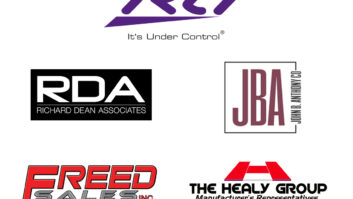Sears Holdings, the corporate parent of Kmart and Sears, is scaling back plans for Sears Essentials, a new store format that was intended to combine the best aspects of the two national chains.
The retail giant has also indicated that CE sales have fallen across all of its formats, although the decline is most pronounced at Kmart.
Sears Essentials was introduced last February as a Kmart conversion that combines quick-turn convenience items like health and beauty aids, food, pet supplies and toys — traditional Kmart strengths — with Sears’ core hardlines assortment, including major appliances and Craftsman tools.
The plan capitalized on Sears Roebuck’s strategy of moving its offering out of shopping malls and into more readily accessible freestanding and strip mall locations. As of Oct. 29, the company had opened 50 Sears Essentials stores, and plans had called for the conversion of another 350 Kmart locations by next year.
But according to the company’s latest 10-Q filing with the Securities and Exchange Commission (SEC), the new stores have managed to achieve “varying degrees of success,” and Sears has reduced the number of stores planned for conversion this year.
The company said it is evaluating alternative ways to sell Sears goods — particularly appliances — within Kmart’s footprint, including remodeling existing Kmart locations. Currently 88 Kmart stores carry home appliances.
Sears intends to continue its rollout of white goods, including its private label Kenmore line, into both Kmart and Sears Essentials locations over the next several years as a way to expand distribution in response to the burgeoning home improvement channel. It will gauge the pace of the rollout, and all future retrofits of Kmart stores, on customer response and the capital required, the filing noted.
In an open letter to shareholders, chairman Edward Lampert explained that Sears Essentials was not intended to be the company’s primary format going forward, but is “one concept among many to be tested and to learn from … We will not rely on a single grand strategy, but will respond to customer desires and market opportunities.”
Lampert said the company still has faith in the Essentials format, but is also seeing “good sales” of appliances and other Sears products and services when simply placed within existing Kmart stores. In addition, gross profit at remodeled Kmarts has been exceeding the rest of the chain, especially where Sears products were added to the assortment.
Meanwhile, comp-store sales for the company’s fiscal third quarter fell 2.8 percent at Kmart and 10.8 percent at Sears through Oct. 29. The company said that fewer transactions, especially in CE, led to Kmart’s comp declines, while Sears’ shortfall stemmed from a cutback in promotional activities in an effort to improve gross margins. Sears experienced comp sale declines in all categories except for majaps, where a modest increase was attributed mainly to higher average selling prices.
Elsewhere, Lampert noted that the company has begun shedding its separate Kmart and Sears corporate identities and cultures, and last month accelerated the process by combining the chains’ merchandising teams into one group under Peter Whitseet, previously Kmart’s chief merchant, and Dan Laughlin, Sears’ former general merchandise manager for home. Whitseet will lead general merchandising for the parent company and continue to oversee merchandising for Kmart, while Laughlin will run the parent company’s overall hardlines business and oversee merchandising for Sears.
Roger Detter, previously Sears’ general merchandise manager for hardlines, retired last month.
Both Whitseet and Laughlin will report to Lampert until a new chief merchant is named. The new structure, Lampert noted, will enable Sears Holdings to “work more effectively with vendors as one company.”
Finally, Lampert used the bully pulpit of his shareholder letter to take a swipe at the financial analysts and media who have been critical of Sears Holdings’ performance and its restrained capital expenditures. He noted that with its 2,300 stores, the issue isn’t building more locations, as some pundits have urged, but making the existing units more productive.
“Although all the attention Sears Holdings is receiving is, in some fashion, flattering, I would caution you to approach much of what is written and said about us with an appropriate amount of healthy skepticism,” he wrote. “This is particularly so with respect to the loudest views, the most widely held views or the so-called ‘expert’ views. For many commentators, analysts, and reporters, their success is dependent on the excitement or controversy generated by their articles — not on the accuracy of their writing or of their predictions.”
He continued, “Most observers and financial pundits missed the turnaround at IBM, missed the turnaround at American Express, missed the turnaround at JC Penney, missed the emergence of Google and missed the resurrection of Kmart — until it was abundantly clear that those companies had succeeded. In all those cases and in many others, imposing the right disciplines, adjusting the cost structure, creating an atmosphere of teamwork and collaboration, and being willing to learn while having the confidence to stay the course in the face of skepticism were the necessary preconditions of success. We are not yet even one year into the merger, and we have plenty of work ahead of us, but that is the culture that we are committed to building at Sears Holdings.”













